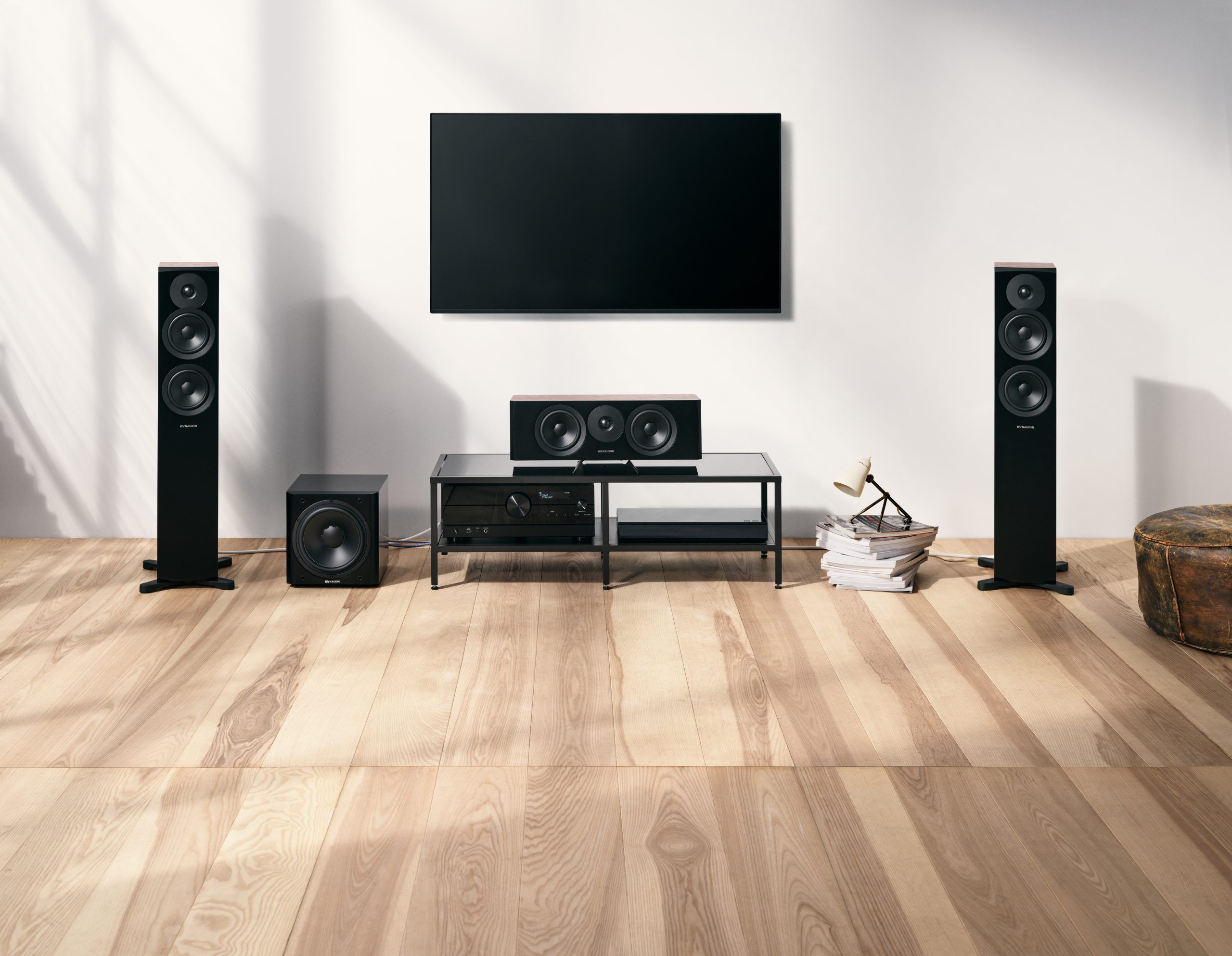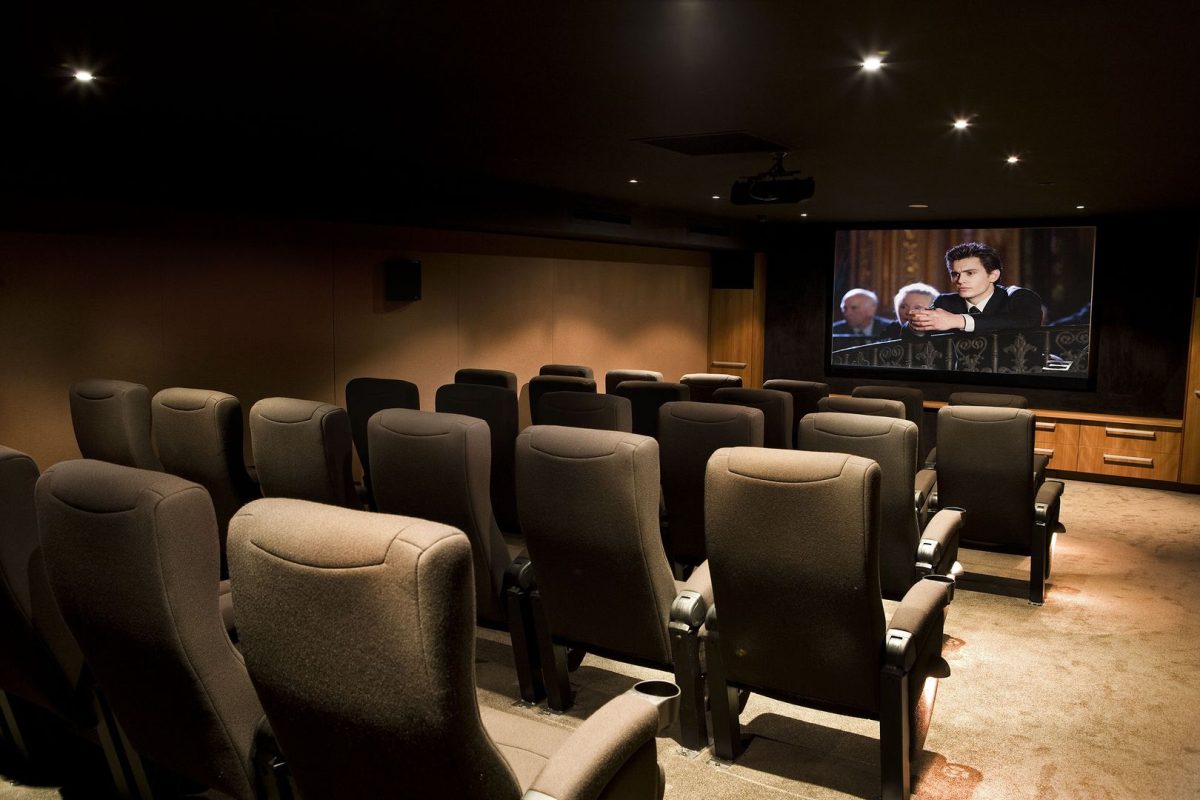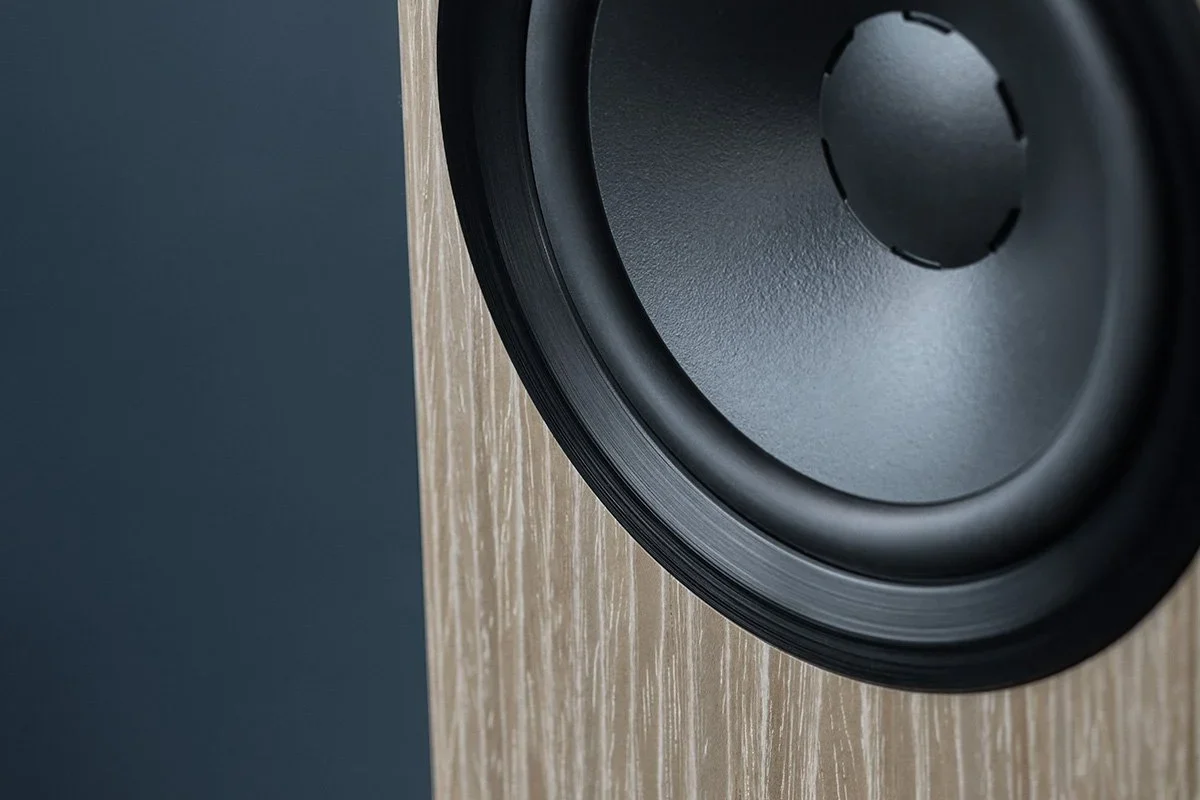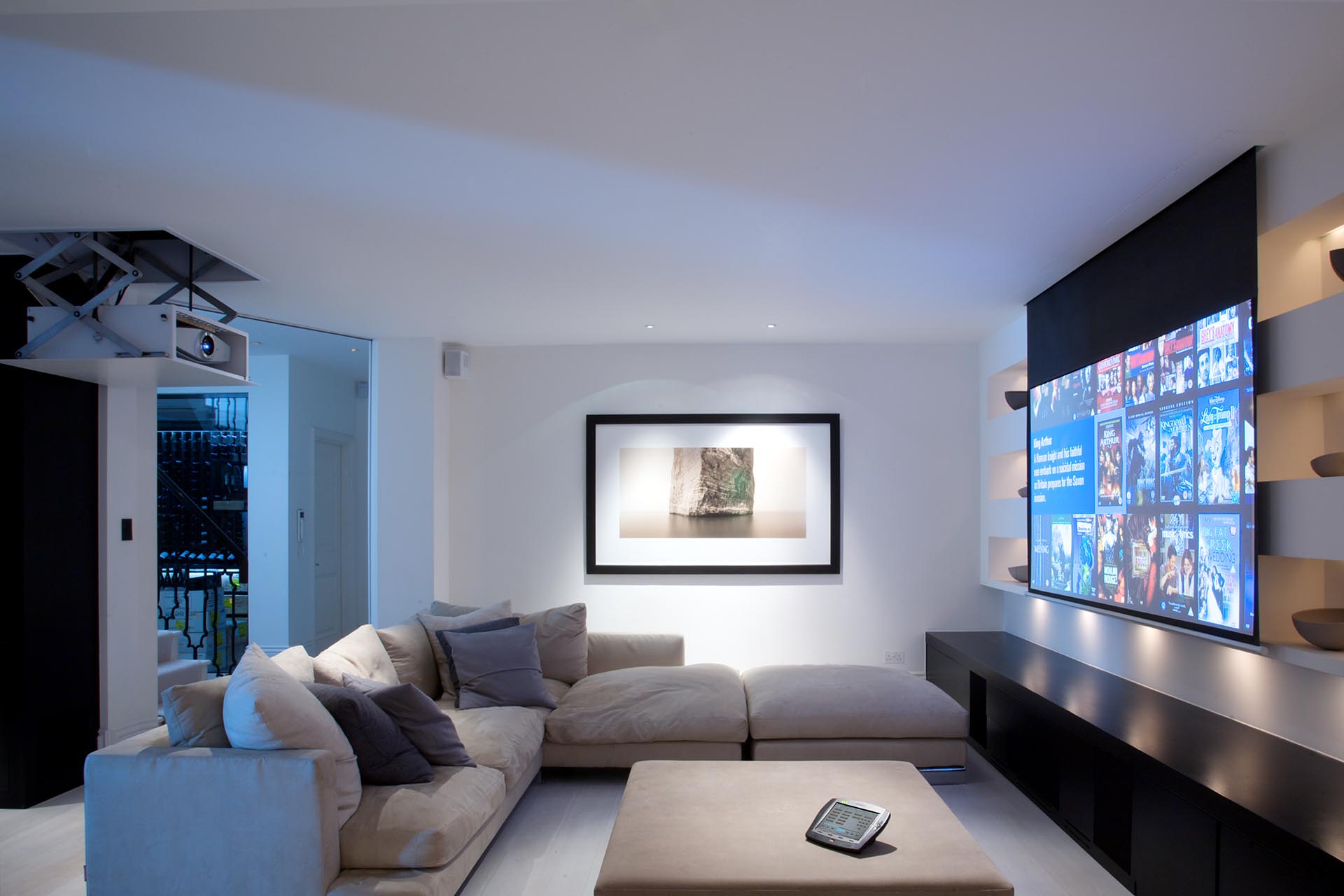The centre speaker acts as the acoustic anchor, stabilising the front soundstage so voices appear locked to the screen, regardless of where you’re sitting.
In stereo-only setups, dialogue often “pulls” toward whichever speaker you’re closer to. But with a well-matched centre speaker, you achieve a seamless phantom image, so whether you’re sitting dead-centre or off to the side, voices remain intelligible and properly localised.
When to Always Use a Centre Speaker
Dedicated home theatre rooms (5.1 and above): Once surround processing comes into play, the centre becomes non-negotiable.
Wide listening areas: In living rooms with multiple seats, a centre channel prevents dialogue from collapsing to one side for those off-axis.
Acoustically challenging spaces: Rooms with reflective surfaces or high ceilings benefit greatly from a direct, centralised vocal anchor.
Dialogue-heavy content: If you primarily watch films, streaming series, or live broadcasts, the centre is essential for speech intelligibility at all volume levels.
Technical Considerations That Matter
Not all centre speakers are created equal, and I’ve seen more systems underperform due to a poor centre than almost any other factor:
- Timbre matching: Always select a centre designed to match your left and right mains. Mismatched voicing creates audible “jumps” as sound pans across the stage.
- Driver alignment: Horizontal MTM (mid-tweeter-mid) designs are common, but if poorly engineered they suffer from lobing and off-axis drop-outs. For wide seating, look for centres with staggered driver arrays or coaxial designs.
- Placement: Position as close to ear height as possible, or angle upwards if below the screen. Avoid placing it deep inside cabinetry—enclosure resonance and reflections can severely impact clarity.
- Calibration: Use room correction (Dirac, ARC, Audyssey, etc.) to balance levels and EQ, but don’t neglect manual fine-tuning. A centre that measures flat but sounds thin may need a subtle boost around 2–4kHz for speech intelligibility.
The Result of Doing It Right
A correctly specified and tuned centre speaker delivers:
- Dialogue clarity that cuts through even the busiest action scenes.
- A soundstage that remains coherent and anchored, regardless of listener position.
- Reduced listener fatigue—because straining to catch dialogue is the fastest way to ruin immersion.
Final Thought
Anyone can put speakers in a room, but crafting an experience that feels like cinema — that requires precision. After 20 years of building home audio systems, my advice is simple: if clarity and immersion matter, invest in your centre channel as much as your mains or subwoofer. It’s not a supporting actor — it’s the lead.




